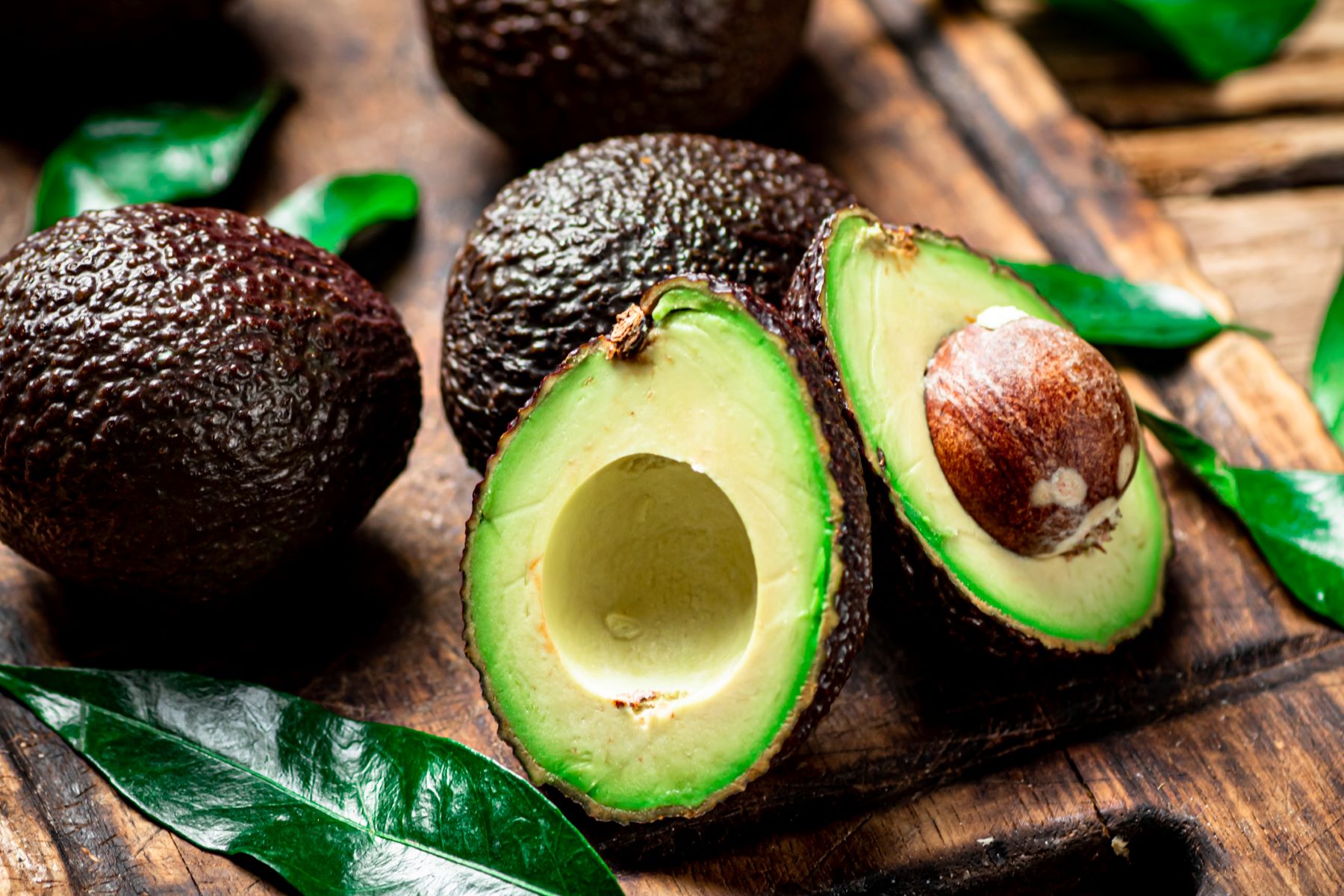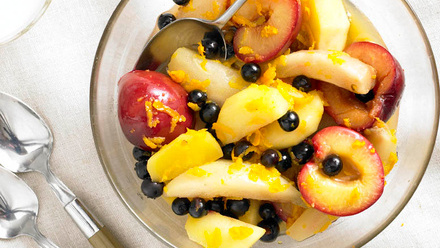The tropical fruit has become a weapon of culture wars. Annabel van Griethuysen balances the nutritional advantages with the environmental cost of producing them.
The avocado has become, in recent years, somewhat of a legend. It has seemingly become the poster child for everything ‘millennial’ and is a firm favourite with vegetarians and vegans. It is also often blamed for the reason why people cannot afford to buy a house. I will leave that one there with no further comment…!

Avocados, also known as alligator pears or butter fruit, originate from South America but are often also cultivated in tropical and Mediterranean climates. Fifty-seven countries worldwide produce avocados, with nearly 350,000 hectares designated for avocado growing, yielding nearly 2.6 million tons per year of fruit. Mexico remains the leader in avocado production, providing 36.8% of the world supply. There is then a big drop to second place, where we find the USA, producing 7.93% of the worlds supply. Avocados grow on trees measuring 10-12m tall with a relatively long life cycle for a commercial crop. The trees grow to maturity in roughly four years and, from eight years, the trees are considered to be adults and can continue to produce fruit year round for 20-25 years. It is reported that in favourable conditions, trees can grow indefinitely. Each tree, once it reaches its peak growing age at 15 years old, can produce 80-100kg of fruit per year.1 The most common avocado variety eaten is the Hass avocado, or Persea americana.2
Your average avocado will contain approximately 136g of edible flesh. However, the portion of avocado defined by the US Nutrition Labelling and Educational Act defines one serving as 30g, or approximately 1/5 of an avocado.2
In the UK, a portion is defined as half an avocado. Avocados are a nutrient-dense and energy-dense food. In particular, they are phytochemical-dense. Table 1 shows the nutrients contained in half an avocado (approximately 68g).
|
Fibre |
4.6g |
|
Sugar |
0.2g |
|
Potassium |
345mg |
|
Sodium |
5.5mg |
|
Magnesium |
19.5mg |
|
Vitamin A |
5.0μg |
|
Panthenoic acid |
1.0mg |
|
MUFAs |
6.7g |
|
Vitamin C |
60mg |
|
Vitamin E |
1.3mg |
|
Vitamin K |
14μg |
|
Folate |
60mg |
|
Vitamin B6 |
0.2mg |
|
Niacin |
1.3mg |
|
Riboflavin |
0.1mg |
|
Energy |
114kcal |
Avocados are water-based but are also rich in monounsaturated fatty acids. This emulsion is thought to enhance the nutritional bioavailability of avocado. They have also been shown to have similar effects on weight change as low-fat fruits and vegetables despite being higher in fat and are associated with several reported health benefits.2
Avocados contain higher quantities of insoluble (70%) and soluble (30%) fibre than other fruits, along with higher levels of proteins. The pulp’s nutritional composition ranges from 12-24% lipids and protein between 1.0-3.0%. Energy-wise, the calorie intake is between 140 and 228kcal per avocado. The highest fat variety within avocados is monounsaturated fat, at 9.8g per 100g, followed by saturated fat at 2.13g per 100g. This high level of fat is what makes avocado stand apart from other fruits in terms of nutrition.
Avocados have high levels of monounsaturated fatty acids, in particular oleic and palmitoleic acids, which have demonstrated effects on decreasing low-density lipoprotein levels and increasing high-density lipoprotein levels in the body – a protective factor against chronic conditions such as cardiovascular disease. Additionally, the mineral composition of avocados includes high levels of potassium, phosphorous, magnesium, calcium, sodium, iron and zinc. They are also high in vitamins, particularly vitamin E, vitamin C and B vitamins.3 The fat/oil content of the fruit means it is also widely used within the cosmetics industry, and can be processed in a similar way to olives to provide avocado oils.
These perceived health benefits are also supported within the relevant scientific literature. In one study observing the consumption of 0.5-1.5 avocados per day in men, consumption demonstrated a reduction in serum cholesterol by 9-43% in half of the observed subjects and the remaining experienced a neutral effect. None showed an increase in total cholesterol or an increase in weight.7 These results led authors to conclude that avocado consumption was beneficial to heart health due to the positive effects on blood cholesterol levels. In a systematic review and meta analysis of avocado consumption and heart disease risk, researchers found that serum HDL concentrations were the main mechanism of benefit in terms of heart disease risk. As these studies were generally carried out in small populations, they did not demonstrate strong statistical power and more research is required to confirm these conclusions. They theorised that this increase in HDL was due to three potential factors: the MUFA content of the avocado and how this potentially replaced other sources of fat in the diet higher in saturated fat; the consumptions of plant sterols, which are high in avocados at approximately 114mg in each avocado; and also the high dietary fibre present.8
There is also growing evidence that avocado consumption may have an impact on brain health. In a study investigating the effect of avocado oil and diabetic encephalopathy, the consumption of avocado oil was found to reduce oxidative stress in the brain and improve brain mitochondrial function.9
It is clear that avocado has many health benefits. However, in each case, further research is required, particularly in noting the effects in the human population as opposed to in animal studies.
How avocados are grown
Due to avocados not being grown in our climate, they have not always been a staple in UK diets. The USA and Europe are the largest importers of avocado, and this is expected to continue into 2030, with the USA importing 40% of worldwide supply, and Europe 31%. Interestingly, the UK saw the lowest growth in consumption in Europe, with an increase of 5% between 2016 and 2020 and a drop of 2% between 2019 and 2020. That being said, consumption in tonnes in 2020 remained over 122,000 in the UK, with other EU countries, for example Poland, only consuming 18,800 tonnes, but a growth of 123% between 2016 and 2020. It is thought that high importation standards, increasing price pressure, Brexit effects and COVID-19 have led to slower increase in demand.4
The production of avocados, and the climate and conditions required to grow them, does vary with variety. The tree itself yields high amounts of avocado fruits; when a tree reaches full maturity after seven years, it can produce approximately 138kg of avocados annually.5
Environmental impacts of avocado production
Unfortunately, we are now seeing that the increase in avocado consumption, and demand for the fruit generally increasing, is accompanied by some significant environmental impacts. As mentioned, these are fruits which cannot be grown in the UK and they need to be produced abroad, processed and shipped to their destination.
As previously stated, avocados are mainly grown in Mexico, where the fruit is a native species, but also are commonly grown in Peru, South Africa, Kenya, Chile, Israel and Spain. An updated free trade agreement signed by the EU in 2020 allowed Mexican avocados to be imported tariff-free. This is predicted to then increase the trade of avocados grown in Mexico into the EU market due to reduction in ‘trade friction’.10
The geographical locations of avocado production are usually subtropical climates. These are characterised by high temperatures and dry weather. It is seen, for example in banana, palm oil, and now avocado production, that tree crops grown in these regions need additional irrigation for water supply in order for these crops to remain commercially viable. Currently, freshwater irrigation accounts for around 70% of freshwater use worldwide. Water consumption is split into green use, which is rainwater, and blue use, which is the surface and ground water. On average, per cubic metre of water consumption per metric tonne of crop (m3t-1), avocados required 849 m3t-1 of green use and 237 m3t-1 of blue use. There is massive variation in these numbers. For example, in Grenada 0m3t-1 blue use was required but in Guatemala 2,295 m3t-1 was required. The average green and blue footprint for fruits is 727 m3t-1 and 147 m3t-1 respectively. In total, 6.96km3, or 2.82 million Olympic sized swimming pools, are used for avocado production on average each year. More worryingly,
Mexico – the largest avocado producer – has the largest water footprint globally and has demonstrated increasing water stress and shortages.10 To put it into perspective, every avocado produced required 320 litres of water to be grown.11
In addition to the water used to produce these fruits, land use for growing them has also increased dramatically as popularity and demand has risen. Again looking at Mexico as the biggest producer, around 160 kilo hectares are dedicated to avocado production, with some states having 80% of their land dedicated to avocado plantations. The increase in land use has increased seven-fold over the last 36 years, resulting in natural local habits such as indigenous forest being destroyed. This includes illegal deforestation for nonregulated avocado production.10
An issue which was seen in quinoa production is that of the local farming land being dedicated to cash crop production, leaving no farmland, or indeed local products and crops, being available for local people to consume. This leads to food instability for local populations in these growing areas. Having said this, the industry does provide significant employment for local regions.10
From an ecological perspective, the explosion in monoculture farming is also having a significant negative impact on the local ecosystems. These industrial-sized monoculture farms emit high levels of agrochemicals into the soil and water supply, reduce soil fertility and damage local plant and insect life. This monoculture approach also leaves the farmers and industry vulnerable to disease and crop failure. In the case of avocados, 80% of the variety grown are ‘Hass’ avocados, and this variety is cultivated from one specific tree located in California. Yes, one single tree, selected due to the tough outer skin produced from this one tree, making the avocados much easier to transport!
If a disease were to take hold of this particular variety, which may have no or little resistance to the disease, then there is a risk that the entire population will be affected.11 With local farmers prioritising this crop and not having diverse varieties of other crop plants, this is a massive financial risk to the producers. The avocado is a high-profit crop, or cash crop, so farmers will preferably grow avocados instead of a range of crops, which would be more protective if a disease were to destroy one harvest.11
After harvesting, avocados also require further processing. They undergo a process known as ‘hot water treatment’ to prevent insect infestation and to control the rate of decay of the fruits. The water temperature needs to be up to 55C for 90 minutes. The fruit also requires treatment with pesticides due to them being imported.6 Once grown and processed, the fruit then needs to be shipped quickly to prevent spoilage, usually via air freight, which leads to increased carbon emissions. The total journey for an avocado grown in Mexico to the UK is 5,555 miles. A two-pack of small avocados has been estimated to have a total CO2 footprint of 846.6g. Whilst this may not sound hugely significant, this is twice the CO2 produced for an entire kilogram of bananas.11
The solution
The solution to this growing crisis may be multifaceted. Firstly, it does appear important to regulate and protect the environment to encourage more sustainable production of avocados.
It would also be beneficial for the consumption rates of avocados to stabilise leading to decreased demand for ecological benefits. Whilst this might appear to have a potential negative impact on the livelihood of local people, alternative, more diverse crops could be planted.
Alternatives to the avocado have been suggested, and fruits such as the breadfruit, plantain or lucumas have all been suggested; however, none quite match the avocado’s virtually unique nutrient profile. Other alternatives, such as raw nuts, have been suggested which also match the nutrient profile of avocado, but come with a very different taste and texture, and may pose a problem for those with allergies.
The answer is not simple, nor is it obvious. It may be necessary to accept that these luxury products, which have become mainstays of many people’s diets, may need to become luxury once more – eaten more as an occasional treat as opposed to every day. Maybe instead of avocado on toast, we can swap to smoked salmon and cream cheese on toast, or even more simply, just egg on toast? Maybe we all need to consider when we add the guacamole on a burrito or throw avocado on a salad?
Personally, I will still enjoy avocados, but less often. We all know that the healthiest diet is one of variety and balance, so I will take the chance to explore other flavours, rather than rely on the familiar, delicious, but not quite so innocent as they first appear.
References
- Food and Agricultural Association (2004) Avocado: Post-Harvest Operation. Accessed 22/3/22. Available at fao.org/fileadmin/user_upload/inpho/docs/Post_Harvest_Compendium_-_Avocado.pdf
- Dreher M L & Davenport A J (2013). Hass Avocado Composition and Potential Health Effects. Critical Reviews in Food Science and Nutrition 53: 738-750
- Araujo R G et al (2018) Avocado by-products: Nutritional and functional properties. Trends in Food Science & Technology. 80:51-60
- Ministry for Foreign Affairs. The European market potential for avocados. Accessed 28/6/22 cbi.eu/market-information/fresh-fruit-vegetables/avocados/market-potential
- Duarte P F et al (2016) Avocado: characteristics, health benefits and uses. Food Technology 74 (4):747-754
- Frankowska A et al (2019) Life cycle environmental impacts of fruits consumption in the UK. Journal of Environmental Management 248: 109111
- Grant W C (1960) Influence of avocados on serum cholesterol.
- Mahmassani H A et al (2018) Avocado consumption and risk factors for heart disease: a systematic review and metaanalysis. American Journal of Clinical Nutrition 107:523-536
- Ortic-Avila O et al (2015) Avocado Oil Improves Mitochondrial Function and Decreases Oxidative Stress in Brain of Diabetic Rats. Journal of Diabetes Research 2015 Article ID 485759
- Sommaruga E & Eldridge H M (2020) Avocado Production: Water Footprint and Socioeconomic Implications. Climate Change and agri-food
- Eldridge H M (2020) Why our love for avocados is not sustainable. Sustainable food trust sustainablefoodtrust.org/news-views/avocados-sustainability







